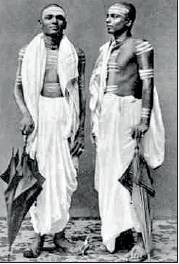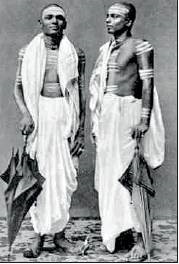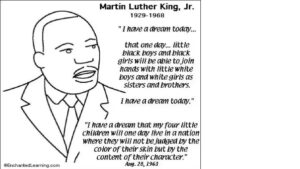Anti-Indian Riots

This paragraph’s basic facts are taken from Maurice Collis‘ “Trials in Burma“.
He was the judge in Rangoon, eye witnessed the riots and wrote his book based on the British Official White Paper given by, The Simon Commission (The Royal Statutory Commission, appointed according to the Law of the Government of India1919, The Montague-Chelmsford Law)
Anti Indian sentiments started after the First World War during the British rule. In Burma there were half million Muslims in 1921. Burmese population then was only eleven million. And in capital Rangoon 70% of the population was Indians, 10% was Chinese and Burmese Buddhists were only 20% of the population. Capital Rangoon is more like a foreign city and Burmese Buddhists were like foreigner in their own country. More than half of Indians were Indian Muslims. Although Myanmar Muslims are different from the Indian Muslims and Indian Myanmar Muslims, Burmese Buddhists put them together even mixed with Hindu Indians, and called them Kala.
The root of this hatred was_
- Different in religion
- Basic anti foreigner feelings
- Low standard of living of the recent migrants.
- Recent migrants’ willingness to do, Dirty, Difficult and Dangerous jobs
- Indians took over the Burmese lands especially Chittiers.
- Indians had already filled up and monopolized the government services when the Burmese were later ready for those jobs.
- Professional competition
- World economic recession of 1930 aggravated the competition for the reduced economic pie.
In 1930 there was an anti Indian riots in Burma under British rule. This was not aimed on the Muslims or Islam but on Indians in general.
The problem started in Yangon port, because of the irresponsible action of the British firm of Stevedores. It had employed hundreds of Indian labourers. While those Indians were on strike, that firm had employed the Burmese workers just to break the strike. So the Indians had to give in and ended the strike. Next morning when the Burmese workers came and report for work they were told by the British firm that their service was no more needed. Some of the Indian workers who were angry because they had to end the strike at failure because of these Burmese workers laughed at them. Some Burmese workers were angry and started the fight and Indians retaliate. It grew rapidly into anti Indian (including anti Muslims) riots. Even within the first half-hour at least two hundred Indians were massacred and flung into the river. Authorities ordered the police to fire upon any assembly of five or more who refuse to lay down the arms, under Section 144 of the Criminal Procedure Code. That was a black day of 26 May. Within two it spread to the whole country and no one knew the exact causality.
In 1931 Indian population of Yangon was still 63% of total and half of them were Muslims. Even Burmese Buddhists must be able to speak Hindi / Urdu in order to survive in Yangon.
There was another anti Muslim riots in 1938, while still under British rule. The real basic hidden agenda was aimed at British Government but the Burmese dare not show this openly. The growing Nationalistic sentiments fanned by the local media disguised as anti Muslim to avoid the early detection and notice followed by the full blown force of mighty British Government machinery.
The Burmese Nationalists fanned the anti Muslim sentiments by using the following facts:
- Problems in mixed marriages: Issue of conversion of the Burmese girls and the religious and legal matters that follows, e.g. non-conversion, divorce, death and inheritance.
- Economically the Muslims were better and some amount of jealousy set in.
- Buddhists could not accept Myanmar Muslims as fellow citizens but look down on them as Kalas or foreigners.
- Burmese Newspapers started the hate campaign against Muslims since 1935. They use the words such as “Muslims had taken their wealth and girls”, to incite hatreds. They called to expel the Muslims from the government service and to ‘deport’ them.
- There was a religious argument between a Moulvi Hassan Shah and a Buddhist, Maung Pan Nyo. A book came out in 1931 about that and Buddhists published pamphlets again to attack Islam. Burmese Muslim Abdulla Maung Sin wrote the rebuttal claiming that Maung Pan Nyo’s book offended Islam and the Prophet. Then Maung Shwe Hpi, a Myanmar Muslim published a book and included all of the above-mentioned books and articles. Hasan Shah published the new edition without any consequences. In June 1938 a Buddhist journalist published the most offending extracts. Newspapers, organizations and Buddhist monks demanded action against the author. They called to stop inter marriages to prevent the spread of Islam.
- The monks even guarded in the markets to prevent the Buddhists from purchasing at Muslim shops.
Because of these anti Muslim activity and preparation and inciting to start an anti Muslim riots, Muslim organizations and Muslim newspapers started a campaign to please the Buddhists to avoid a riot. On 26.7.1938 anti-Muslim rally was held at Shwe Dagon pagoda.
Burmese started the Burma for Burmese only Campaign. Then marched to the Muslim (Surti) Bazar. While the Indian Police broke the violent demonstration, three monks were hurt. Burmese Newspapers use the pictures of Indian police attacking the Buddhist monks to further incite the spread of riots. Muslim properties: shops, houses and mosques were looted, destroyed and burnt to ashes. They assaulted and even massacred the Muslims. It spreads to all over Burma and recorded that 113 mosques were damaged.
On 22.9.38 British Governor set up the Inquiry Committee. They found out that the real cause was the discontent in the government regarding the deterioration in sociopolitical and economic conditions of Burmans. The book was used as an inciting factor by the irresponsible Burmese newspapers. They use the anti Muslim propaganda as a disguise to cover up for the political struggle to gain independence. So the Buddhist used the Muslims as a scapegoat, for the first time, to fight against the British.
The Simon Commission (The Royal Statutory Commission, appointed according to the Law of the Government of India 1919, The Montague-Chelmsford Law) to inquire the effects of Diarchy system of ruling Burma, had recommended that special places be assigned to the Myanmar Muslims in the Legislative Council.
It recommended that:
- full rights of citizenship should be guaranteed to all the minorities:
- the right of free worship,
- the right to follow their own customs,
- the right to own property
- and to receive a share of the public revenues for the maintenance of their own educational and charitable institutions.
- It recommended Home Rule or independent government separate from India or the status of dominion.
But the British Government refused to accept all those recommended except the separation, at the round table committee on India held in London in 1930.
Anti-foreign sentiment and Nationalism
The pride and good feelings of nationalism: the love for the country, race and religion is frequently exploited and used by many politicians, ultra-nationalists, religious fanatics, racial extremists and previous Military Juntas of Burma.
Adolf Hitler of Nazi Germany and Slobodan Milosevic, were the most prominent and indisputable example. But it is shameful to admit that many governments and politicians are guilty of this crime one time or another to get or accomplish their own agenda or to cover up their faults and failures. They use to threaten their own people with the foreign powers and enemies, western colonists, imperialists, religious terrorists, Communists and possible outbreak of racial riots, danger of losing independence of their beloved country.
It is sad to note that, that propaganda warfare is usually successful with the help of the local government controlled media and because of the use or exploitation of the nationalistic spirit. People against this would be labeled as unpatriotic or traitor.
Once intoxicated with the patriotism and nationality fever, people were blinded. They are ready to do anything for that patriotism. They are even willing to kill or dare to be killed. They are willing to sacrifice themselves, their family, their property and everything on earth. Patriotism could mobilize the whole nation.
Myanmar opposition leader Daw Aung San Suu Kyi once comments regarding the political extremists, religious fanatics and ultra nationalists, ” Well, there are people who think that it’s right to do anything in the name of their religion, their race, their family, or any organization to which they may belong.”





